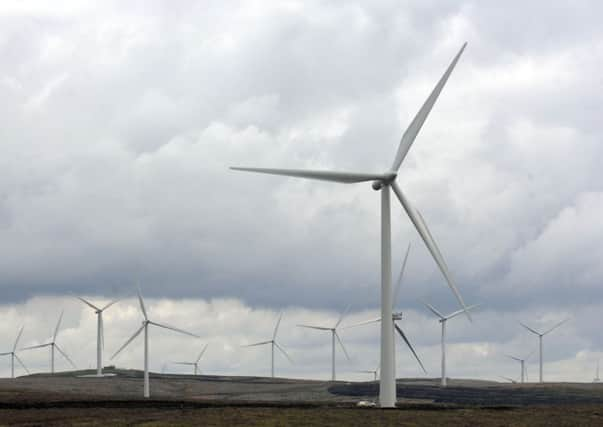Critical time for Scotland’s renewable energy


THIS is a historic year for Scotland, and a vital 12 months for Scotland’s renewable energy industry. The successes of recent years have seen us invest billions of pounds into Scotland’s economy, finally make some progress on renewable heat and become Scotland’s second source of electricity. But it is clear that we are entering a new phase, with harder times ahead.
The Electricity Market Reform (EMR) process, which is now reaching its final stages, has brought the biggest shake-up of the renewable energy sector since the dawn of large-scale wind power in the UK.
Advertisement
Hide AdAdvertisement
Hide AdEMR is designed to drive investment into the energy markets of the future, as well as to protect consumer bills – and few in the industry would argue with those objectives.
The final parts of the EMR framework will make or break the level of future growth onshore, offshore and on the islands. At the halfway point of the process, last summer, often against the prevailing mood of our membership, I felt positive that all the pieces of the jigsaw were ready to fall into place – and that it would all be alright in the end.
Fast-forward six months, and today I feel much less certain about the future. Some of the pieces are still to materialise, let alone find their place in the bigger picture, and it’s difficult not to feel nervous when there is so much to be won or lost in the next few weeks.
The immediate future also sees the staging of the Scottish Renewables’ Annual Conference, which is being held at the EICC today and tomorrow. While it goes without saying that there is already plenty to discuss, day one of the event will see a high-powered panel discuss the main threats to the development of their sector, and the actions necessary to overcome these challenges – among them Christian Egal, CEO of EDF Energy Renewables, Ronnie Bonnar, managing director of Repsol Nuevas Energias UK and Martin McAdam, chief executive of Aquamarine Power.
Throughout the conference the exhibition hall will bring companies including ABB, Aggreko and RES Offshore face-to-face with delegates.
On day two, the conference will split into four separate events examining the pillars which support the growth of the industry: Finance, Planning and Consents, Grid and Technology, and Innovation. All topics which are easily capable of filling an entire day on their own.
So, here are a few headline actions we need to see over the next few weeks if the industry is to remain on course to hit the Scottish Government’s target to generate the equivalent of 100 per cent of power consumed in Scotland by 2020:
Firstly, my optimism at the tail end of the year, when it seemed that at least some of the Scottish offshore wind projects would be aboard the first batch of early contracts to be supported by the UK Government, has now been replaced by a concern over the lack of even one Scottish project on the list. These projects are the trailblazers which will clear the way for others to follow. Without them, offshore wind in Scotland is still a fair few nautical miles away from becoming a reality.
Advertisement
Hide AdAdvertisement
Hide AdSecondly, we need to tread very gingerly with the introduction of auctions to access contracts. While industry accepts that some form of competition is right in the long term, developers face the prospect of investing millions of pounds onshore – tens of millions of pounds offshore – before they know that their project will win a contract, and with no idea of the revenue they will receive for the power they generate.
Thirdly, we need a solution to the renewables “grid-lock” on the Scottish islands. Unless the issue of the vital interconnector cables – through which electricity generated there could be exported – is resolved by the Department of Energy and Climate Change, it is difficult to see how the islands’ huge resource can be tapped.
Projects in Orkney, Shetland and the Western Isles now find themselves in the ridiculous situation of not being able to access a Contract for Difference because they have no grid connection, while also being unable to underwrite a grid connection because they have no Contract for Difference.
Lastly, we need government to recognise the special characteristics, and importance, of renewable heat, without which we cannot hope to reach those 2020 renewables targets.
As an industry, we are acutely aware that the significant successes we have delivered for Scotland have been built on the solid foundation of government and industry working together to create the right framework for investment.
For all who care about the growth of renewables and the decarbonisation of our power sector, that task has never been more important than it is now, as the UK government finalises the final pieces of EMR.
•Niall Stuart is chief executive of Scottish Renewables www.scottishrenewables.com